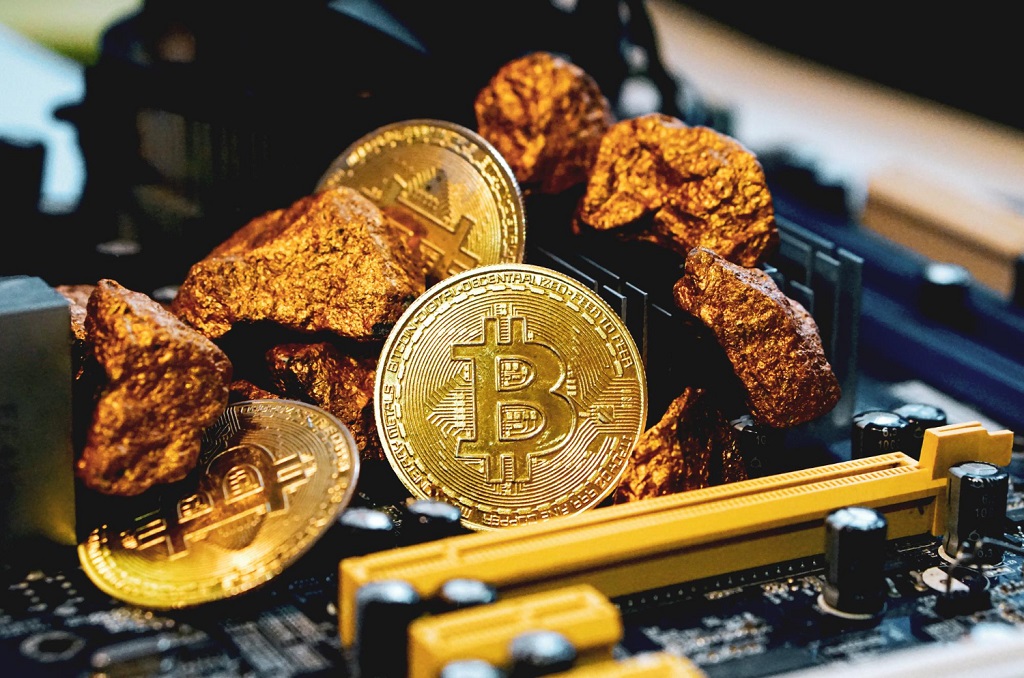In the world of investments, the Gold vs Crypto debate is a hot topic. As we navigate through the 21st century, the traditional allure of gold is being challenged by the digital charm of cryptocurrencies. This article aims to dissect the key aspects of both investment options, providing you with a comprehensive guide to make informed decisions.
Table of Contents
Historical Perspective
Brief History of Gold as an Investment
Gold has been a symbol of wealth and power since the dawn of civilization. The ancient Egyptians, Greeks, and Romans were all fascinated by gold and used it extensively in their societies, not only as a form of currency but also for decoration and religious ceremonies.
In the 19th century, the Gold Standard was established, linking the value of a country’s currency to the amount of gold it possessed. This system provided a sense of financial stability until it was abandoned in the mid-20th century. Despite this, gold has remained a popular investment option due to its enduring value and the perception of it as a safe haven during economic downturns.
Emergence and Growth of Cryptocurrencies
The history of cryptocurrencies is much shorter but no less fascinating. The first and most famous cryptocurrency, Bitcoin, was introduced in 2009 by an anonymous person (or group) known as Satoshi Nakamoto. Bitcoin offered a new concept of money – one that is decentralized, digital, and relies on cryptographic principles for security.
The success of Bitcoin sparked a wave of new cryptocurrencies, known as altcoins. Today, there are over 5,000 different cryptocurrencies, including well-known names like Ethereum, Ripple, and Litecoin.
Understanding Gold

What is Gold?
Gold is a chemical element with the symbol Au (from Latin: aurum) and atomic number 79. It’s a dense, soft, malleable, and ductile metal with a bright yellow color and luster, the properties of which remain without tarnishing when exposed to air or water. Chemically, gold is a transition metal and a group 11 element. It is one of the least reactive chemical elements and is solid under standard conditions.
In the context of investment, gold is considered a precious metal and has been used for centuries as a form of currency and a store of value. It’s often purchased as a hedge against economic uncertainty due to its enduring value.
How is Gold Valued?
The value of gold is primarily determined by its weight and purity. The weight of gold is typically measured in troy ounces, and its purity is measured in karats, with 24 karats being pure gold. However, the price of gold in the market fluctuates based on several factors:
Supply and Demand
Like any commodity, the price of gold is influenced by supply and demand dynamics. When demand for gold increases or supply decreases, the price of gold tends to rise.
Market Conditions
Economic instability often leads to an increase in the price of gold as investors seek safe-haven assets. Conversely, during periods of economic stability and growth, the price of gold may fall as investors turn to higher-yielding assets.
Currency Values
The price of gold is often inversely related to the value of the U.S. dollar. When the dollar is strong, gold is more expensive for other nations to purchase, which can decrease demand and lower the price of gold.
Pros and Cons of Investing in Gold
Investing in gold comes with its own set of advantages and disadvantages:
Pros:
- Gold is a tangible asset that you can physically own and store.
- It’s considered a safe haven during economic downturns and periods of inflation.
- Gold has a negative correlation with the stock market, making it a good diversification tool.
Cons:
- Gold does not produce income or dividends.
- The price of gold can be volatile in the short term.
- Storage and insurance costs can be high if you own physical gold.
How to Invest in Gold?
There are several ways to invest in gold:
- Physical Gold: This includes gold coins, bullion, and jewelry. These can be purchased from a dealer and stored.
- Gold ETFs: Gold Exchange-Traded Funds track the price of gold and can be bought and sold on a stock exchange.
- Gold Mining Stocks: These are shares in companies that mine gold. Their value is influenced by the price of gold and the company’s operational efficiency.
- Gold Mutual Funds: These are funds that invest in a variety of gold-related assets, providing diversification.
- Gold Futures: These are contracts to buy or sell gold at a future date at a set price.
Understanding Cryptocurrency

What is Cryptocurrency?
Cryptocurrency is a type of digital or virtual currency that uses cryptography for security. Unlike traditional currencies issued by central banks, cryptocurrencies are decentralized and operate on technology called blockchain, which is a distributed ledger enforced by a network of computers, also known as nodes.
The first and most well-known cryptocurrency is Bitcoin, created in 2009 by an anonymous person or group of people using the pseudonym Satoshi Nakamoto. Since then, thousands of alternative cryptocurrencies have been created, each with its unique features and uses.
How is Cryptocurrency Valued?
The value of a cryptocurrency is not determined by a physical asset but by various factors:
Supply and Demand
The value of a cryptocurrency increases when the demand for it surpasses the supply and decreases when the supply is greater than the demand.
Utility
The usefulness and versatility of a cryptocurrency can influence its value. If a cryptocurrency has more practical applications, it is likely to be more valuable.
Market Sentiment
Public perception and sentiment can significantly influence the value of a cryptocurrency. Positive news and endorsements can increase demand, while negative news can decrease it.
Technological Advancements
Improvements and innovations in the underlying technology of a cryptocurrency can increase its value.
Pros and Cons of Investing in Cryptocurrency
Investing in cryptocurrencies also has its advantages and disadvantages:
Pros:
- High Potential Returns: Cryptocurrencies have the potential for high returns, with some investors making substantial profits.
- Liquidity: Cryptocurrencies can be bought and sold 24/7, offering high liquidity.
- Accessibility: Cryptocurrencies can be bought in fractions, making it accessible to people with small amounts to invest.
Cons:
- Volatility: Cryptocurrency prices can be highly volatile, leading to potential losses.
- Regulatory Risks: Cryptocurrencies face regulatory risks, and a change in regulations can impact their value.
- Security Risks: While cryptocurrencies use secure technology, they are still susceptible to hacking, theft, and fraud.
How to Invest in Cryptocurrency?
Investing in cryptocurrencies can be done through:
- Cryptocurrency Exchanges: These are platforms where you can buy and sell cryptocurrencies, like Coinbase or Binance.
- Initial Coin Offerings (ICOs): ICOs are a way for companies to raise funds by selling new cryptocurrencies. It’s similar to an Initial Public Offering (IPO) for stocks.
- Mining: Some cryptocurrencies, like Bitcoin, can be mined by using computer power to solve complex mathematical problems.
Gold vs Crypto Key Differences
| Factors | Gold | Crypto |
|---|---|---|
| Nature | Gold is a tangible asset, physically existent and can be held in hand. | Cryptocurrencies are entirely digital assets, existing only in the digital space. |
| Volatility | Gold has relatively low volatility. Its price changes are usually gradual and predictable over time. | Cryptocurrencies are highly volatile. Their prices can change rapidly in very short timeframes, leading to potential for high returns but also high risk. |
| Market Size | The gold market is large and established, with a market capitalization in the trillions of dollars. | The cryptocurrency market, while growing rapidly, is still much smaller than the gold market. The total market cap of all cryptocurrencies is in the trillions of dollars. |
| Liquidity | Gold has high liquidity. It can be bought or sold with relative ease, and the presence of many buyers and sellers in the market ensures that trades can be made without significantly affecting the price. | Liquidity can vary significantly among different cryptocurrencies. While major cryptocurrencies like Bitcoin and Ethereum have high liquidity, many smaller cryptocurrencies may not be easily sellable at market prices. |
| Regulation | Gold is heavily regulated. Transactions are monitored by government bodies, and gold dealers are required to meet certain standards and regulations. | Cryptocurrencies are less regulated. While some countries have started implementing cryptocurrency regulations, the overall regulatory environment is still developing and can vary greatly by country. |
| Security | Gold can be stolen or lost, and storing it securely can be costly. | Cryptocurrencies use cryptographic security measures, making them very secure. However, they can still be stolen from digital wallets or exchanges, and if a private key is lost, the associated cryptocurrency is effectively lost as well. |
| Use Cases | Gold has numerous use cases, from jewelry and decoration to use in electronics and other industries. It’s also used as a store of value and hedge against inflation. | Cryptocurrencies can be used for digital transactions, smart contracts, and as a store of value. Some cryptocurrencies also have specific use cases related to the blockchain technology they’re built on. |
| Income Generation | Gold does not generate passive income unless it’s lent out or invested into gold dividend stocks. | Some cryptocurrencies can generate passive income through staking, where users participate in the network’s operation and receive rewards. |
| Accessibility | Gold can be bought in any quantity, but physical ownership requires secure storage. | Cryptocurrencies can be bought in any quantity, down to a fraction of a coin, and stored in a digital wallet. |
| Transaction Time | Gold transactions, particularly physical ones, can take time to process and settle. | Cryptocurrency transactions can be processed quickly, often within minutes, regardless of the amount or the geographical distance between sender and receiver. |
This comparison highlights the fundamental differences between gold and cryptocurrencies as investment assets. Each has its unique features, advantages, and disadvantages, and the choice between the two will depend on an individual investor’s preferences, risk tolerance, and investment goals.
Case Studies
Success and Failure Stories of Gold Investments
Success Story: The 2008 Financial Crisis
During the 2008 financial crisis, gold proved its mettle as a safe haven asset. As stock markets around the world crashed, investors flocked to gold, driving its price up. Between 2007 and 2011, the price of gold nearly tripled, providing substantial returns for those who had invested in gold before or during the crisis.
Failure Story: The 1980 Gold Bubble
In contrast, the gold bubble of the late 1970s and early 1980s serves as a cautionary tale. Following a decade of inflation and geopolitical tensions, the price of gold reached an all-time high in January 1980, only to fall dramatically over the next two years. Investors who bought gold at the peak of the bubble faced significant losses.
Success and Failure Stories of Crypto Investments
Success Story: The Bitcoin Boom
Perhaps the most famous success story in the crypto world is that of Bitcoin. Those who invested in Bitcoin in its early days and held onto their investment have seen astronomical returns. For instance, if you had invested just $100 in Bitcoin in 2010, your investment would be worth millions today, even after accounting for the various ups and downs in Bitcoin’s price.
Failure Story: The Collapse of Mt. Gox
On the flip side, the collapse of Mt. Gox, once the world’s largest Bitcoin exchange, serves as a stark reminder of the risks involved in the crypto market. In 2014, Mt. Gox filed for bankruptcy after losing 740,000 of its customers’ Bitcoins (around 7% of all Bitcoins at the time) in a hacking incident. This event caused a significant drop in Bitcoin’s price and resulted in substantial losses for those who had their Bitcoins in the Mt. Gox exchange.
These case studies illustrate the potential for both high returns and significant losses when investing in gold and cryptocurrencies. They underscore the importance of understanding the risks involved and the need for careful investment planning and risk management.
Expert Opinions
Gold
- Forbes: Gold is expected to rise in 2023 as the U.S. dollar weakens. The overall outlook for gold in 2023 is shiny.
- Money: Gold’s price has climbed in 2023, and was up as much as 9% for the year in April. As of the end of June, the price is up around 4% year to date.
- CBS News: In 2023, prices and interest rates remain high. Here’s how gold investments could help.
Cryptocurrency
- Forbes: Inflation has trended lower in 2023, triggering a rebound in cryptocurrencies and other risk assets. Among the most popular altcoins, Solana (SOL) and Bitcoin Cash (BCH) were top performers in the first half of 2023.
- Outlook India: This is the Definitive List of the 12 Best Crypto Coins to invest in 2023: ApeMax – Boost to Earn Big instantly with this New Smartly Designed.
- Analytics Insight: In conclusion, investing in crypto in 2023 can still be a wise decision for many investors. The crypto market continues to evolve and grow.
These expert opinions provide a snapshot of the current sentiment towards both gold and cryptocurrencies. As always, it’s important to remember that the value of investments can go up and down, and investors should do their own research and consider their own risk tolerance before making investment decisions.
Gold vs Crypto: Which is a Better Investment?

Factors to Consider When Choosing Between Gold and Crypto
Choosing between gold and crypto as an investment depends on several factors:
- Risk Tolerance: Cryptocurrencies are more volatile than gold, meaning they can experience larger price swings in shorter periods. If you’re a risk-averse investor, you might prefer the relative stability of gold. On the other hand, if you’re willing to take on more risk for the chance of higher returns, you might be drawn to cryptocurrencies.
- Investment Horizon: Gold has proven to be a reliable store of value over the long term, while the future of cryptocurrencies, although promising, is less certain. If you’re investing for the long term, you might feel more comfortable with gold. If you’re interested in short-term gains, cryptocurrencies might be more appealing.
- Diversification: Both gold and cryptocurrencies can serve as a hedge against traditional financial markets. If your portfolio is heavily weighted towards traditional assets like stocks and bonds, adding gold or cryptocurrencies can provide diversification.
- Interest in Technology: If you’re interested in the technology behind cryptocurrencies and believe in its potential, you might be more inclined to invest in cryptocurrencies.
Risk vs Reward Analysis
Gold and cryptocurrencies offer different risk-reward profiles:
- Gold is often seen as a safe-haven asset that can protect wealth during times of economic uncertainty. While it may not offer the high returns of riskier assets, it can provide stability and preserve capital.
- Cryptocurrencies, on the other hand, can offer high potential returns. For example, Bitcoin has provided extraordinary returns for some investors. However, cryptocurrencies are also much riskier and more volatile than gold.
Diversification in Investment Portfolio
One approach to the gold vs crypto question is to hold both in your portfolio. This can provide the stability of gold and the high potential returns of cryptocurrencies. The key is to understand your risk tolerance and investment goals and to balance your portfolio accordingly.
Neither gold nor cryptocurrencies are inherently better investments. The better choice depends on individual factors such as your risk tolerance, investment horizon, interest in technology, and diversification needs. As with any investment, it’s important to do your own research and consider seeking advice from a financial advisor.
Future Trends
Predicted Trends for Gold Market
The future of the gold market is influenced by a variety of factors, including economic conditions, inflation rates, and geopolitical tensions. Here are some trends to watch:
- Increased Demand in Uncertain Times: In periods of economic uncertainty or instability, investors often turn to gold as a safe haven. If such conditions persist or intensify, demand for gold could increase, potentially driving up prices.
- Central Bank Policies: Central banks around the world hold significant amounts of gold. Their buying and selling activities can influence the gold market. In recent years, many central banks, particularly in emerging economies, have been net buyers of gold.
- Technological Advances: Gold has many industrial uses, particularly in electronics. Advances in technology could create new uses for gold, potentially increasing demand.
Predicted Trends for Crypto Market
The crypto market is relatively new and evolving rapidly. Here are some trends to watch:
- Mainstream Adoption: As cryptocurrencies become more widely accepted for transactions, their demand could increase. This includes acceptance by businesses for payment and by governments for services.
- Regulatory Developments: The regulatory environment for cryptocurrencies is still developing. Regulations can have a significant impact on the crypto market. For example, clearer regulations could boost investor confidence and drive up prices, while restrictive regulations could limit the growth of the crypto market.
- Technological Innovations: The crypto market is heavily influenced by technological innovations. Advances in blockchain technology could lead to new use cases for cryptocurrencies, potentially increasing their value.
- Environmental Concerns: The environmental impact of cryptocurrencies, particularly those that require energy-intensive mining processes like Bitcoin, has been a topic of concern. Changes in societal and investor attitudes towards environmentally friendly practices could influence the crypto market.
Both the gold and crypto markets are influenced by a wide range of factors, and their future trends are uncertain.
Conclusion
The Gold vs Crypto debate is a complex and multifaceted one, with each offering unique advantages and risks. Gold, with its centuries-long history as a store of value, offers stability and reliability. It’s a tangible asset that has stood the test of time, and it’s often seen as a safe haven during times of economic uncertainty.
On the other hand, cryptocurrencies, as a relatively new asset class, offer high potential returns and the opportunity to be part of a technological revolution. They provide a level of accessibility and decentralization that’s not possible with traditional assets.
However, cryptocurrencies are also characterized by high volatility and regulatory uncertainty. The crypto market is still maturing, and while it has the potential for high returns, it also carries significant risks.
In the end, the choice between gold and crypto as an investment depends on individual factors such as your risk tolerance, investment horizon, and diversification needs. It’s important to do thorough research, stay informed about market trends, and possibly seek advice from a financial advisor.
Whether you choose to invest in gold, crypto, or both, remember that all investments carry risk, and it’s important to invest only what you can afford to lose. Diversification is key to managing risk and achieving long-term investment goals.


